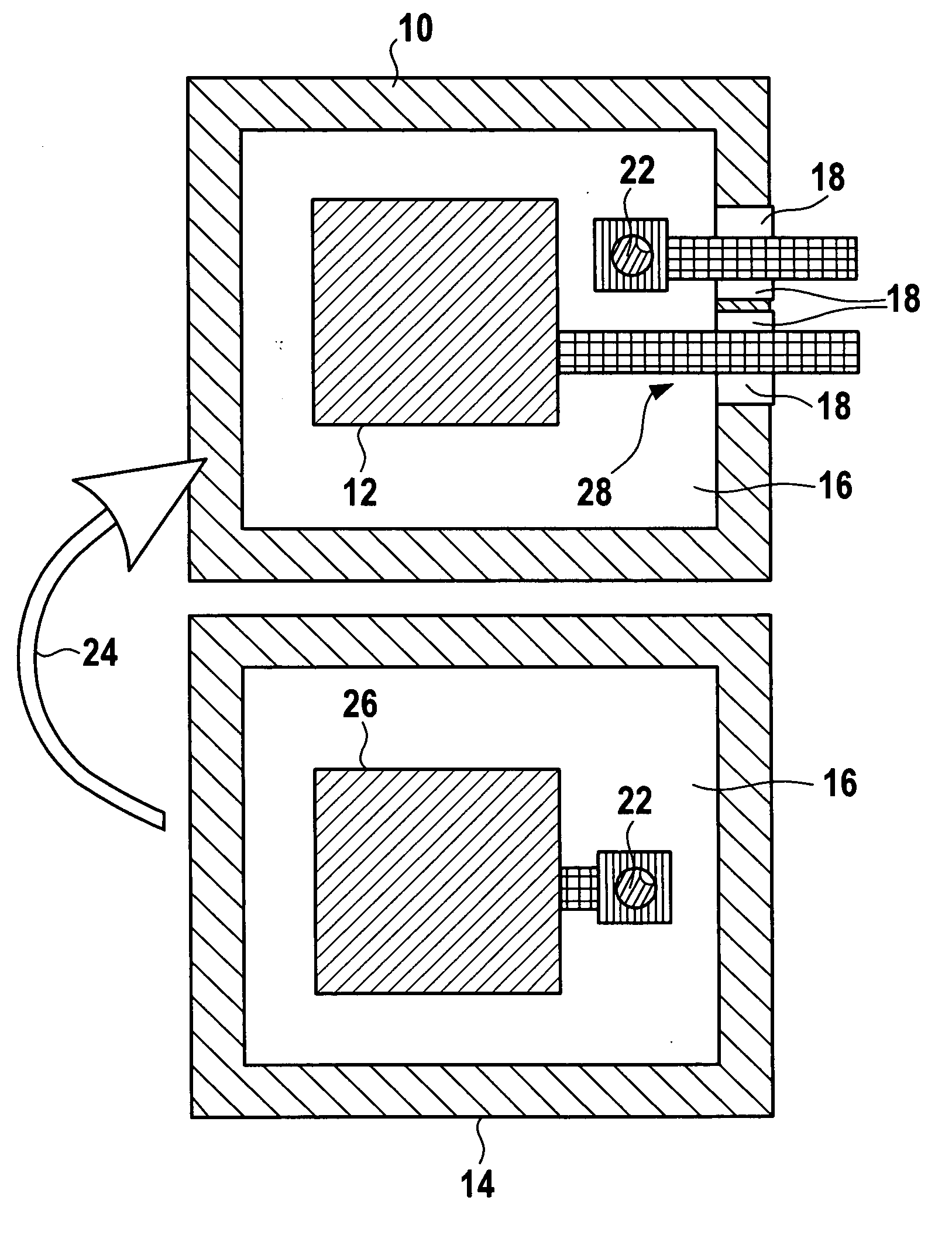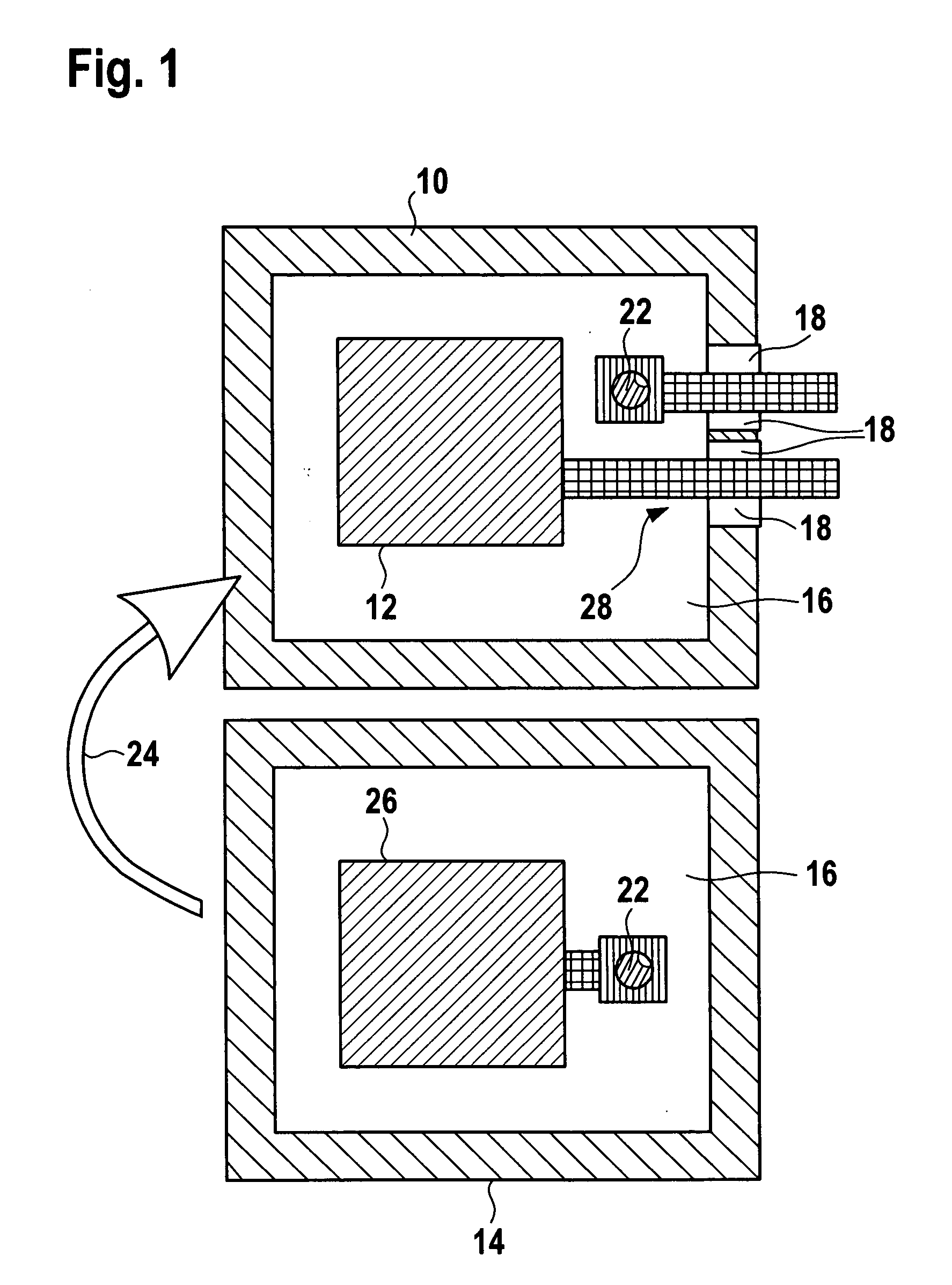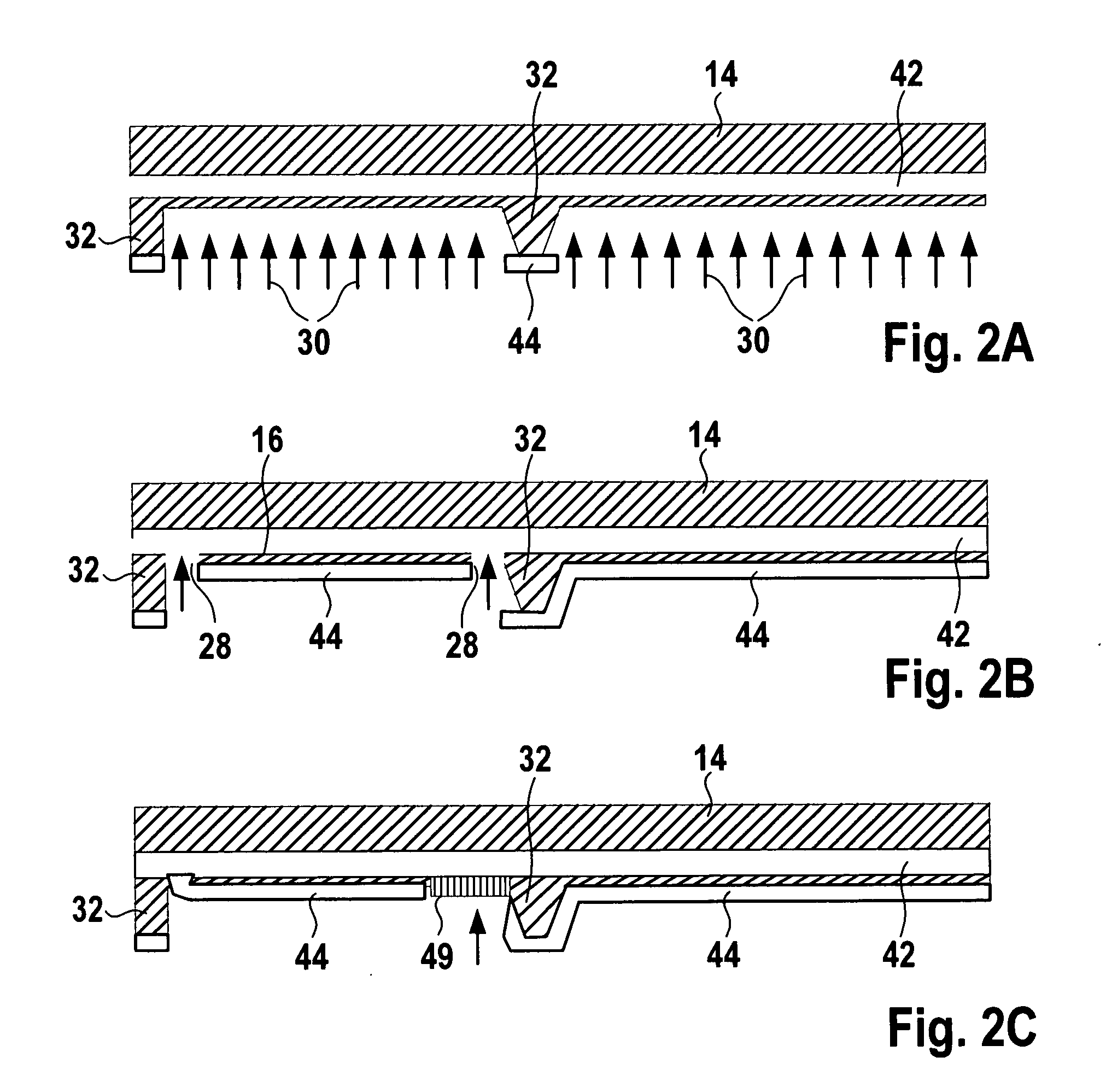Capacitive pressure sensor and method of manufacture
- Summary
- Abstract
- Description
- Claims
- Application Information
AI Technical Summary
Benefits of technology
Problems solved by technology
Method used
Image
Examples
Embodiment Construction
[0011] The core of the present invention is the manufacture of a capacitive pressure sensor 100, shown in FIG. 3, from two wafers bonded together using SOI technology, which is suitable for extreme temperature requirements and additionally allows for the integration of electronics suitable for high temperatures.
[0012] As can be seen from FIG. 1, first two SOI wafers 10, 14 are processed separately of each other and are subsequently joined together using a flip-chip process (arrow 24 in FIG. 1). In the process, the first wafer (electronics wafer 10, lower electrode 12), which supports the later evaluation circuits 20, is patterned by a conventional microelectronics process, supplemented by the trench etching of the capacitive electrode.
[0013] The steps for patterning evaluation circuits 20 follow currently existing technologies. This applies to the patterning of the amplifier circuit and passive integrated elements. In addition there is the process step for the lateral insulation of t
PUM
 Login to view more
Login to view more Abstract
Description
Claims
Application Information
 Login to view more
Login to view more - R&D Engineer
- R&D Manager
- IP Professional
- Industry Leading Data Capabilities
- Powerful AI technology
- Patent DNA Extraction
Browse by: Latest US Patents, China's latest patents, Technical Efficacy Thesaurus, Application Domain, Technology Topic.
© 2024 PatSnap. All rights reserved.Legal|Privacy policy|Modern Slavery Act Transparency Statement|Sitemap



